Making gains at home will translate into more power on the road.

To run long—and maintain your speed while doing so—you have to be strong, a fact that Canadian ultramarathoner Matt Shepard is all too familiar with.
As a former strength coach, he used to spend his winters bulking up before running outside all summer. But when gyms closed due to the Covid-19 pandemic, he pivoted to training with Tonal. “I first used it after a couple back-to-back races—including Big Dog’s Backyard Ultra and the One Track Mind Ultra Marathon,” he says. “I was pretty torn up after that, but it was just incredible how quickly using the Tonal trainer allowed me to get back to running,” he says.
Shepard started with Tonal’s triathlon training program, which combined strength and mobility. “I could see and feel myself getting stronger again,” he says, which allowed him to start increasing his volume and get back on the road. “I liked to use the big weights in the gym—I was just a huge muscle dude—but Tonal’s programs have helped me to kind of shift my mindset away from only lifting the heaviest things to moving my body as a whole to get strong,” Shepard explains.
Strength training is so important for runners that you shouldn’t even consider it cross-training, says Jason Fitzgerald, a USATF-certified running coach and the founder of Strength Running in Denver, CO. “It’s just part of the training that’s necessary to achieve your potential. Strength work helps runners build power into their stride, improve their economy or efficiency, prevent injuries, recruit more muscle fibers to run faster, and improve their body composition.”
Since incorporating Tonal into his training regimen this past winter, Shepard is back to logging 70 to 100 miles a month in training for Across the Years, a six-day race in December during which he’ll try to log as many laps as possible on a one-mile track over the course of six days. “My goal is to break the Canadian national record,” says Shepard. (FYI, that’s 540 miles!)
Whether you’re gunning for national records or your own PRs this marathon season, strength training is easier than ever to do right at home. These trainer-approved Tonal moves will ensure you’re getting the most out of every step when you hit the pavement.
1. Barbell Glute Bridge
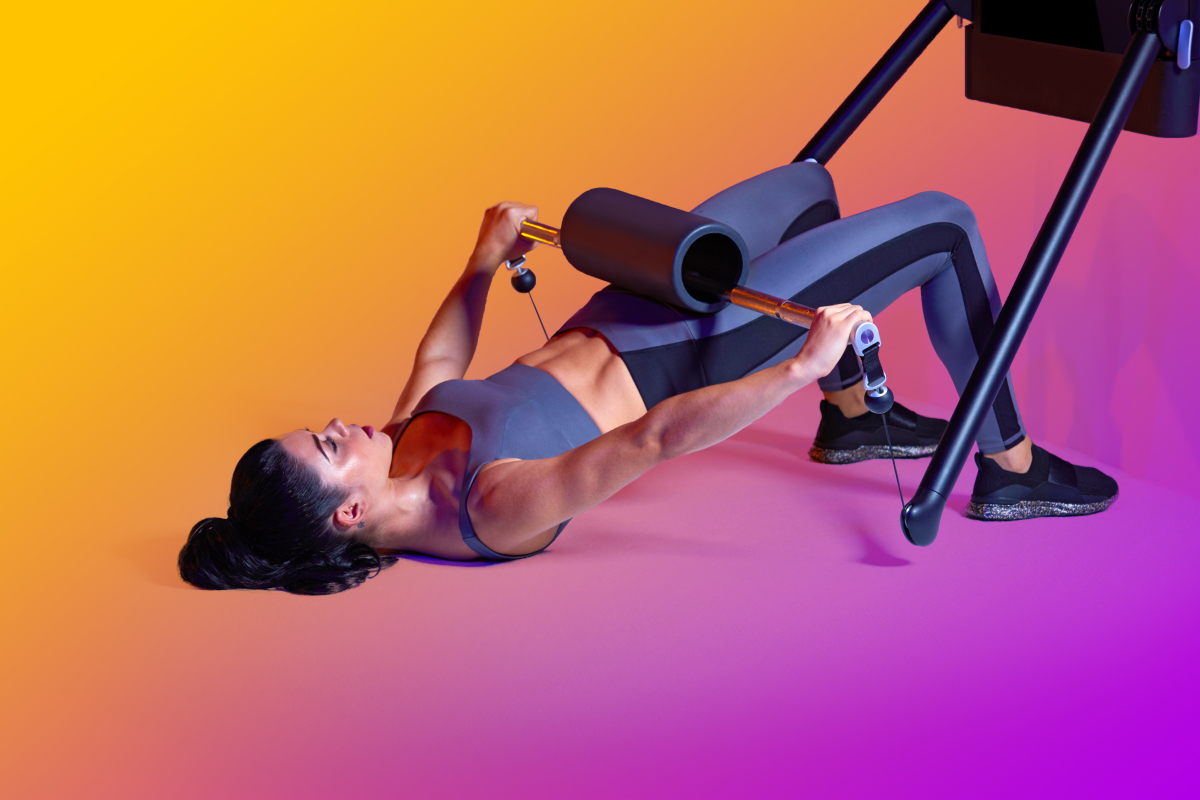
How to do it: Lie faceup on the floor or a mat, hips in line with the end of Tonal’s arms, feet planted on the floor with the barbell over your hips. Engage your core, then press the floor away from you, squeezing your glutes to lift your hips toward the ceiling. Lower your hips back down to the floor, bringing your torso with you and repeat.
Why it works: “The gluteal muscle group is the largest in the body, and it not only helps runners stay upright, but it also helps them propel themselves forward,” explains Fitzgerald. Strong glutes also help you maintain proper form and prevent injuries. “And if you’re spending hours sitting down every day, this is a great exercise to counteract all that,” he adds.
2. Barbell Romanian Deadlift
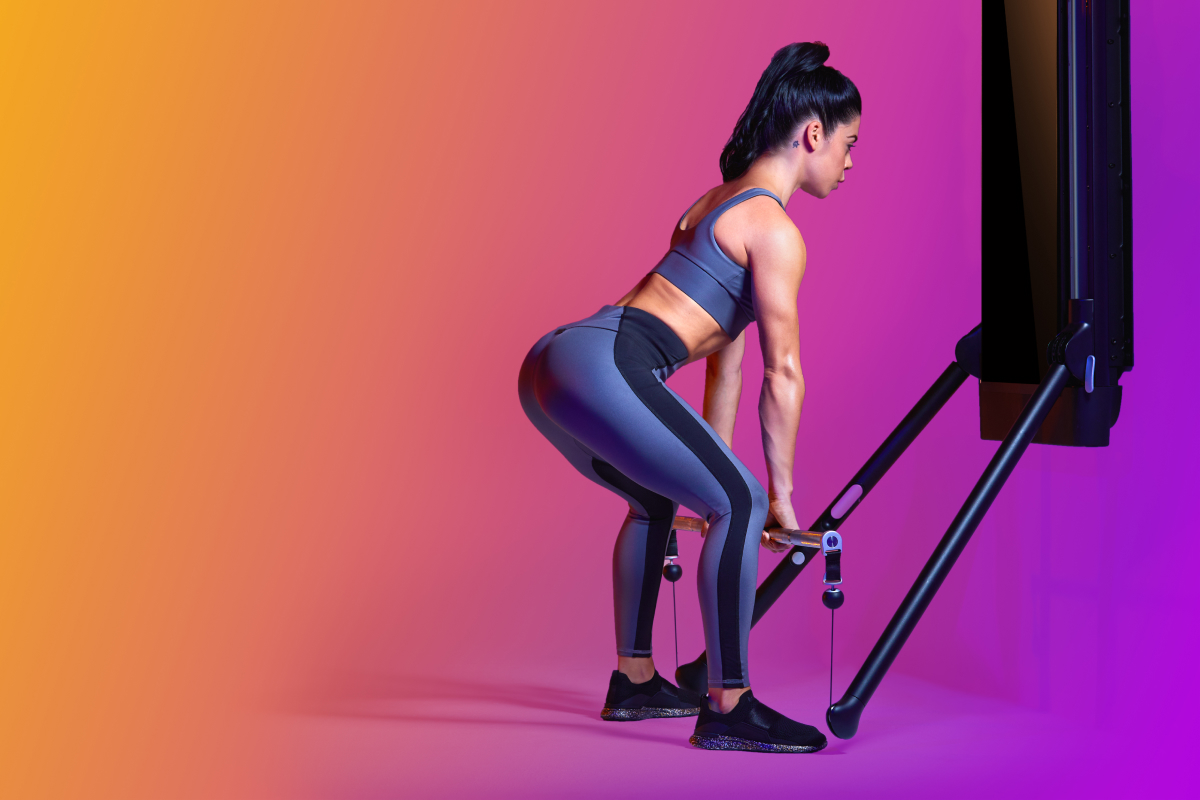
How to do it: Stand with feet hip-width apart, toes lined up with the end of Tonal’s arms. Grab the bar with your hands outside your knees and stand tall. With a slight bend in knees, send your hips back like someone is pulling you from behind as the bar slides down. Maintain a straight back like you’re up against a wall and squeeze your glutes to come back up to standing, sliding the bar up the legs.
Why it works: The posterior chain includes muscles along the back of your body: the glutes, hamstrings, and calves, says Fitzgerald “These muscles are often underdeveloped in runners, and weaknesses here can contribute to running injuries,” he explains. “This move is an excellent exercise to strengthen that whole chain.”
3. Goblet Reverse Lunge
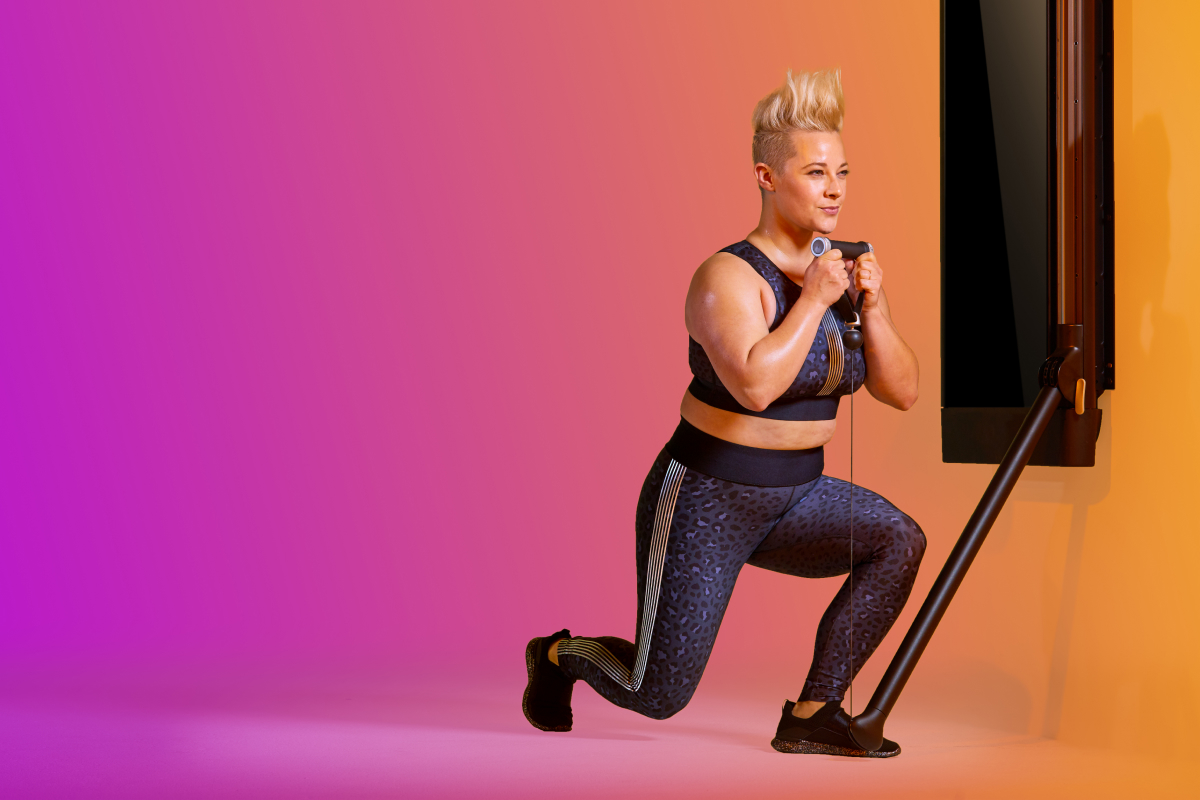
How to do it: Hold the Smart Handle by the straps and position it in front of your chest. Stand tall at the end of Tonal’s arms. Step right foot back and bend both knees to 90-degree angles to drop into a reverse lunge. Right knee should hover just above the floor and chest should stay proud. Press through the left heel to push the floor away to stand again, and repeat on the same side. Repeat the reps on the other leg.
Why it works: “The reverse lunge requires strength, stability, and coordination, which makes it a great exercise for building all three physical skills,” says Fitzgerald. Plus, lunges mimic the movement pattern of running, while adding resistance to them helps you build more strength and resilience.
4. Single-Arm, Single-Leg RDL
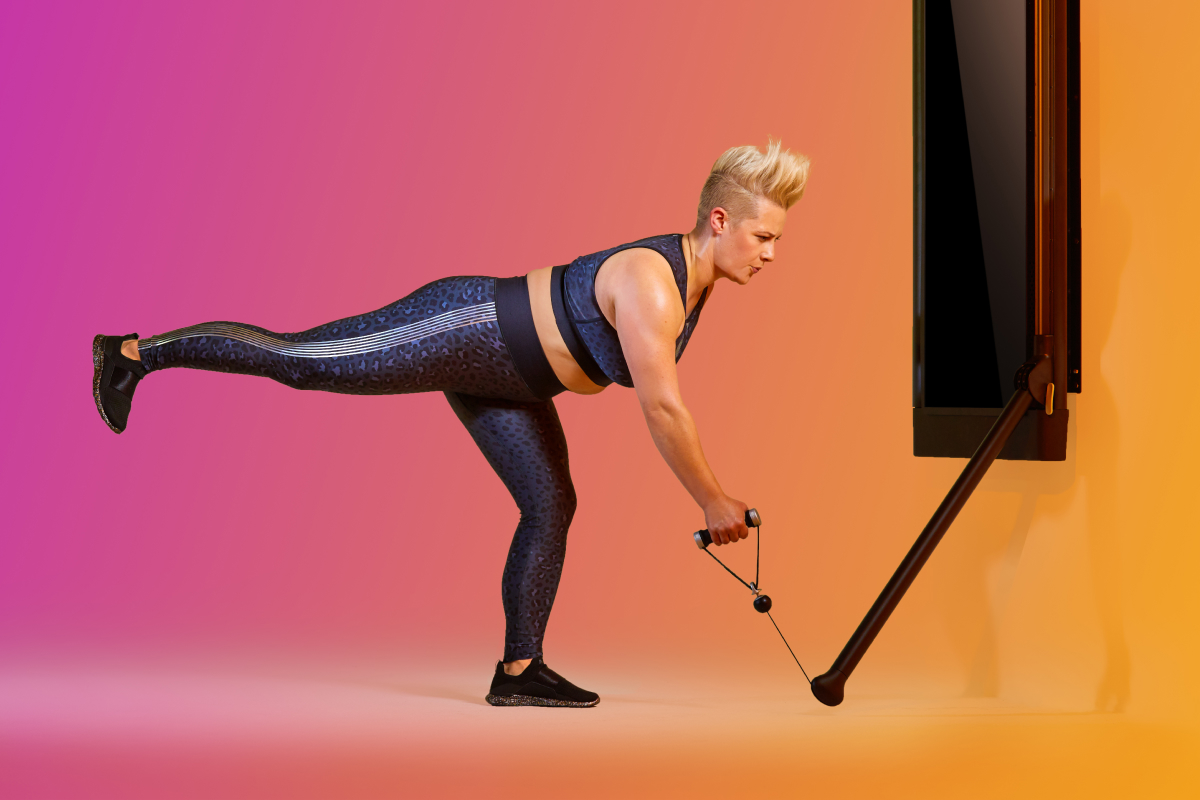
How to do it: Face Tonal and stand tall slightly behind the end of the arm. Take one Smart Handle with right hand. Hinge at the hips and with a slight bend in left knee, lift your right leg straight back, dropping your upper body as the leg lifts. Imagine your torso is a barbell reaching from your heel to your head, keeping your body straight and almost parallel to the floor. Use the left glute to power the torso back up and repeat on the same side.
Why it works: “Running is essentially a series of highly-coordinated, one-legged hops,” says Fitzgerald. “Because we’re using one leg at a time, we must build single-leg strength during training to stay healthy—and working one leg and arm at a time, just like running, helps prevent imbalances.”
5. Half-Kneeling Pallof Press
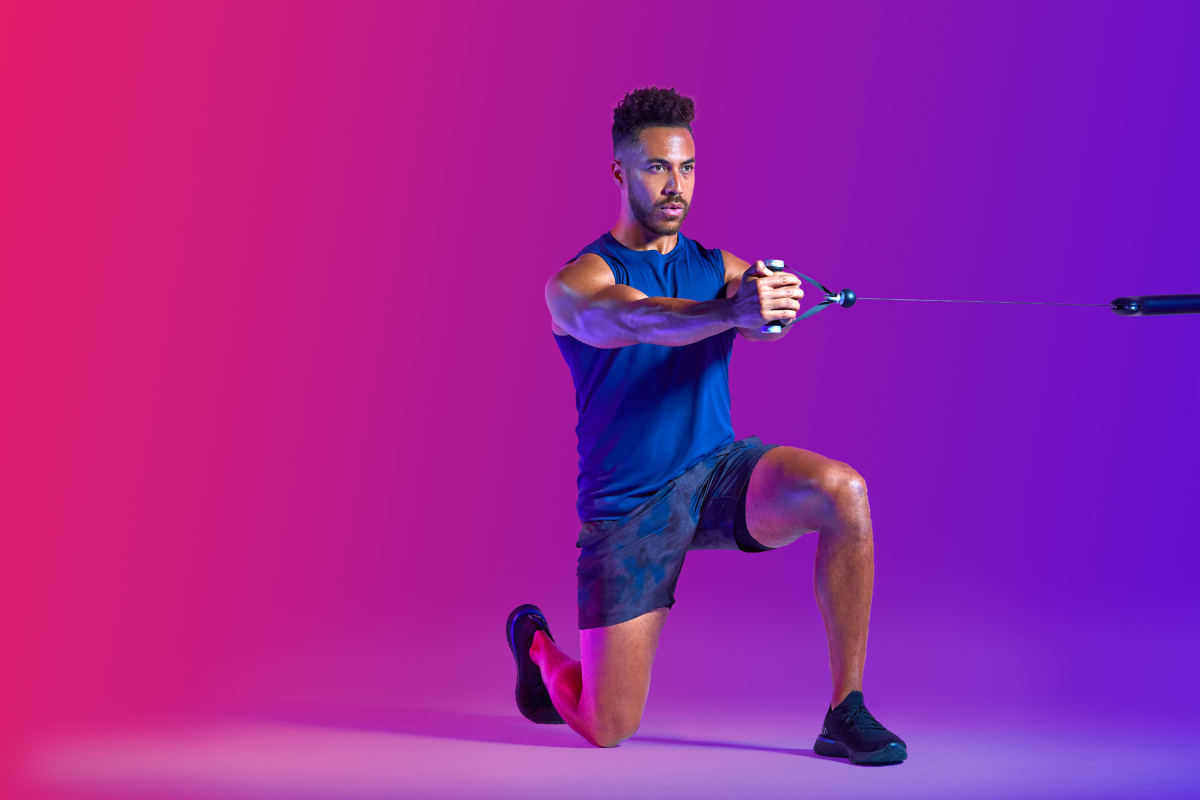
How to do it: Take the Smart Handle in both hands and drop into a half-kneeling position with your right knee on the floor. Center your hands in front of your chest with elbows bent at your sides. Push the handle away from your chest. Keeping your arms centered, use your core to avoid rotating your torso toward the Tonal. Pull the handle back in toward your chest, bending at the elbows, not letting your shoulders point forward and down toward the floor.
Why it works: “Runners typically spend most of their time moving in the sagittal plane (or straight ahead). But we also have a fair amount of rotational movement in our stride as our torso rotates with each foot strike,” says Fitzgerald. “To develop stability with this rotation, we must train it specifically with an exercise like the Pallof press, which challenges our strength in the rotational, or transverse, plane.”